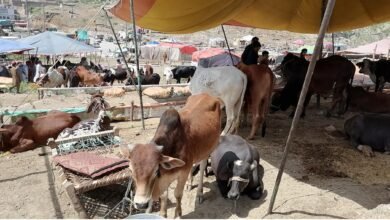The Everyday Cost of Climate Change in Pakistan

By: Sheikh M. Arshad
We often hear about climate change in terms of global numbers like rising carbon levels, melting glaciers, or international climate agreements. But behind these big headlines lies a quieter, more personal story. Climate change is no longer a distant environmental issue. It’s affecting our homes, our health, and even our peace of mind. Across Pakistan, people are already feeling its impact in their daily lives.
Take finances, for example. Summers are becoming longer and hotter, forcing families to spend more on electricity just to stay cool. In cities like Karachi and Lahore, energy bills spike every year as air conditioners run day and night. For many, this extra expense is becoming a heavy burden, especially when prices of food and fuel are already high.
Then come the floods. The 2025 floods were a painful reminder of how severe the crisis has become. A third of the country was underwater, and the estimated the losses at more than seventy billion dollars. Millions of families lost their homes, crops, and savings. Most had no insurance to help them recover. In fact, affordable insurance for disasters like floods or crop damage barely exists in Pakistan, leaving ordinary citizens to rebuild on their own.
Climate change is also quietly raising the cost of living. Droughts and unpredictable weather are damaging crops, reducing harvests of wheat, rice, and cotton. As a result, food prices continue to climb. In 2024, food inflation stayed above twenty percent according to government data. For families already struggling, it’s like paying an invisible tax every month.
The impact on health is just as serious. Hotter seasons mean longer allergy cycles and dirtier air. Cities like Lahore and Faisalabad frequently record hazardous air pollution levels that harm the lungs and heart. Wildfires and dust storms in parts of Balochistan and Khyber Pakhtunkhwa make things worse. Diseases are also spreading in new ways. Warmer temperatures and standing water after floods have helped mosquitoes thrive, leading to record dengue outbreaks. The National Institute of Health reported more than seventy-five thousand dengue cases in 2022 alone.
Beyond the physical toll, the emotional strain is growing too. Many people now live with constant worry—will the next monsoon flood their home again, will their crops survive, or will their children have a stable future? Psychologists call this “eco-anxiety,” and it’s becoming more common. A UNICEF survey in 2023 found that more than half of young Pakistanis see climate change as one of the biggest threats to their future. Nearly half said it affects their daily life and mental well-being.
In flood-hit areas like Sindh and southern Punjab, families who lost everything are still struggling to rebuild their lives. The uncertainty and trauma of displacement often leave lasting emotional scars. This silent mental health crisis rarely gets attention, yet it’s one of the most human parts of the climate story.
All of this shows that climate change is not just about rising seas or melting glaciers—it’s about how ordinary people live, work, and hope. Protecting the planet now means protecting people’s daily lives. Pakistan needs stronger flood protections, better water management, and affordable insurance for farmers and homeowners. Health systems must be ready for climate-linked diseases, and mental health support should be part of every recovery effort.
Climate change is already here, shaping the way we live. The question is not whether we can stop it overnight, but how we can adapt and protect each other. This is not only an environmental fight, rather it’s a fight for stability, dignity, and a secure future for every family in Pakistan.





